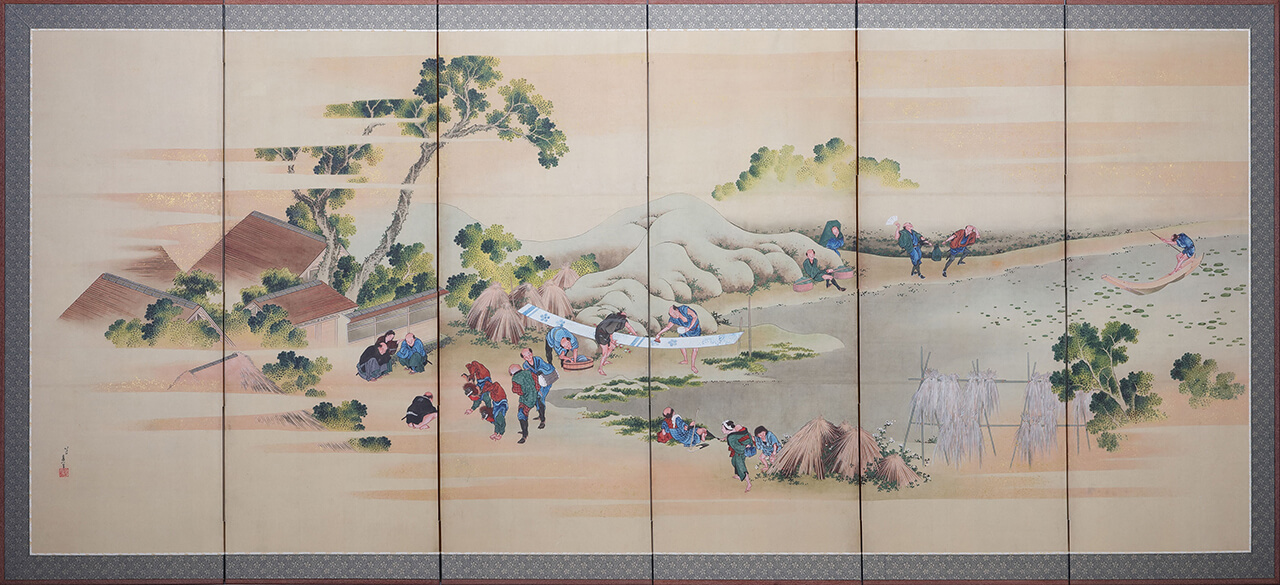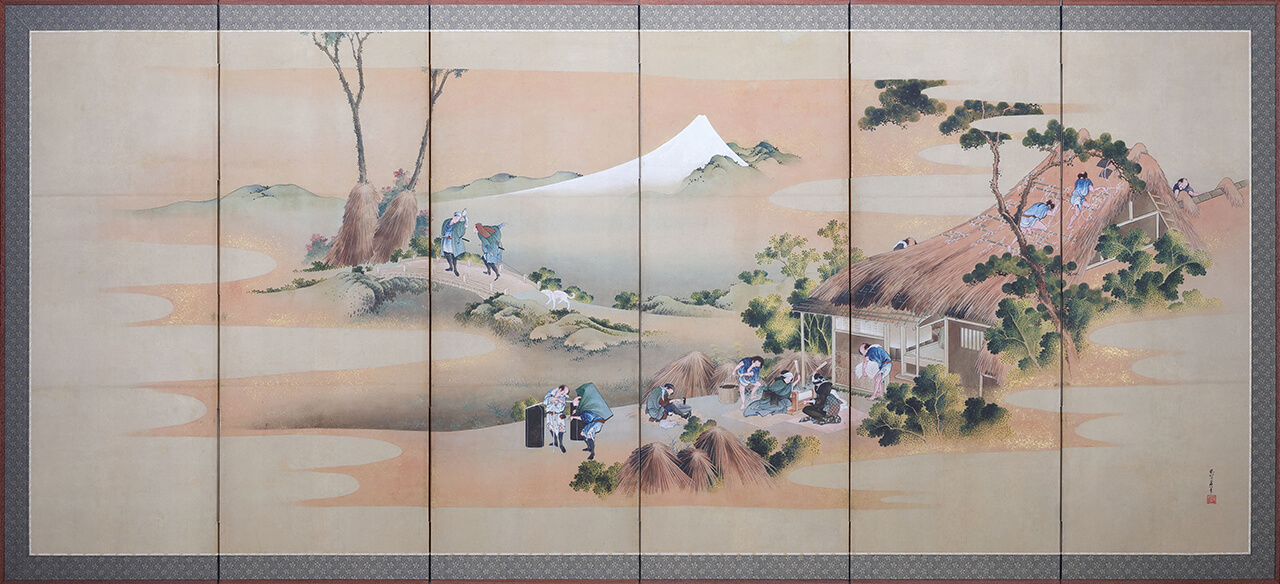Country Scenes and Mount Fuji
Facsimiles of works in the collection of the Freer Gallery of Art, Smithsonian Institution, Washington, D.C. : Gift of Charles Lang Freer, F1902.48, F1902.49.
These images are based on the high resolution facsimile produced by the Tsuzuri Project. Unauthorized copying, duplication, or transfer of these images is strictly prohibited.
DATA
- Artist:
- Katsushika Hokusai
- Historical era:
- Edo (19th century)
- Material:
- printed, sprinkled gold on washi paper
- Medium:
- pair of six-fold screens
- Theme:
- High Resolution Facsimile of Japanese Art Abroad
- Size:
- Each screen H150.6 × W351.0 cm
- Recipient:
- Sumida Ward
- depository:
- The Sumida Hokusai MuseumMAP
[Original]
- Current owner:
- The Freer Gallery of Art of the Smithsonian Institution
- Material:
- ink, color, and sprinkled gold on paper
DESCRIPTION
This is a pair of six-panel folding screens depicting rural areas with a faraway view of the sacred mountain Mt. Fuji. You can observe men rethatching their roofs, women beating cloth on wooden blocks, a group of lion-dancers, and other people engaged in a wide variety of lifestyles in the series of compositions in the two rows of panels. Hokusai produced numerous works, both in woodblock printing and original painting, but there are few of his folding pictures. This is a very important work, being arguably the only pair of six-panel folding screens produced by Hokusai with his own hands. Because of its splendor, with its rich variety of colors and gold pigments, this work is considered to have been produced upon request around 1830, when The Thirty-six Views of Mount Fuji was published. It is also precious in that it teaches us how Hokusai was related to the upper class of the time. In 1902, Charles Lang Freer purchased these rows of panels separately from the Oriental art historian Ernest Fenollosa and Fenollosa’s ex-wife.


